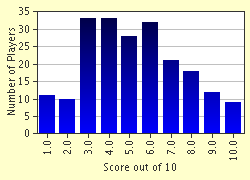Quiz Answer Key and Fun Facts
1. This poetic form is characterized by fourteen lines of iambic pentameter and a rhyme scheme. This form has several variations including the Petrarchan. What form is it?
2. This Japanese form of poetry has five lines. Line one has five syllables, line two has seven, line three has five, and lines four and five have seven syllables each, making a total of 31 syllables. Which form is this?
3. This light verse form of poetry has five lines. The first, second, and last lines scan like this: weak STRONG weak weak STRONG weak weak STRONG, and the third and fourth scan like this: weak STRONG weak weak STRONG'. Which form is it?
4. This French form of poetry has eight lines. The first, fourth, and seventh lines are identical. So are the second and eighth lines. It usually is written in a combination of iambic tetrameter and trimeter. Which form is it?
5. This form is 19 lines and six stanzas long. There are two rhyming sounds with a rhyme scheme like this: aba aba aba aba aba abaa. Here's the confusing part: the first and third lines of the first stanza are repeated in alternation- the first line is the last line of the second stanza, the third line is the last line of the third stanza, etc. And the first and third lines are the third and fourth lines, respectively, in the last stanza. Which form is this?
6. This form of Asian poetry is unique in its repetition. The second and fourth lines of every stanza are the first and third of the next, and the second and fourth lines of the final stanza happen to be the first and third lines of the first stanza, giving a 'circle' effect. Which form is this?
7. This form of poetry has seven stanzas, six with six lines and one with three lines. The six words that end the first stanza's lines are repeated at the end of the lines in the first six stanzas. The final stanza uses two of these "keywords" per line.
8. This French form of poetry contains three eight-line stanzas and an envoy which may be either four or five lines long. The last line of the first stanza is the last line of all others, including the envoy. There are only three rhyming sounds, and no word can be repeated as a rhyme. Which form is this?
9. This form of poetry resembles a word puzzle. There are six lines per stanza. In all stanzas but the last, the first four lines are two different lines repeated twice, and the last two lines use all the words of the previous line. The last stanza uses all the words of the previous stanzas. Which form is this?
10. This form of poetry is French in origin and contains 13 lines. It is built on two rhymes. What is unique about this form is that the first few words of the first line are repeated as the last lines of the next stanzas.
Source: Author
Crystallina
This quiz was reviewed by FunTrivia editor
agony before going online.
Any errors found in FunTrivia content are routinely corrected through our feedback system.

